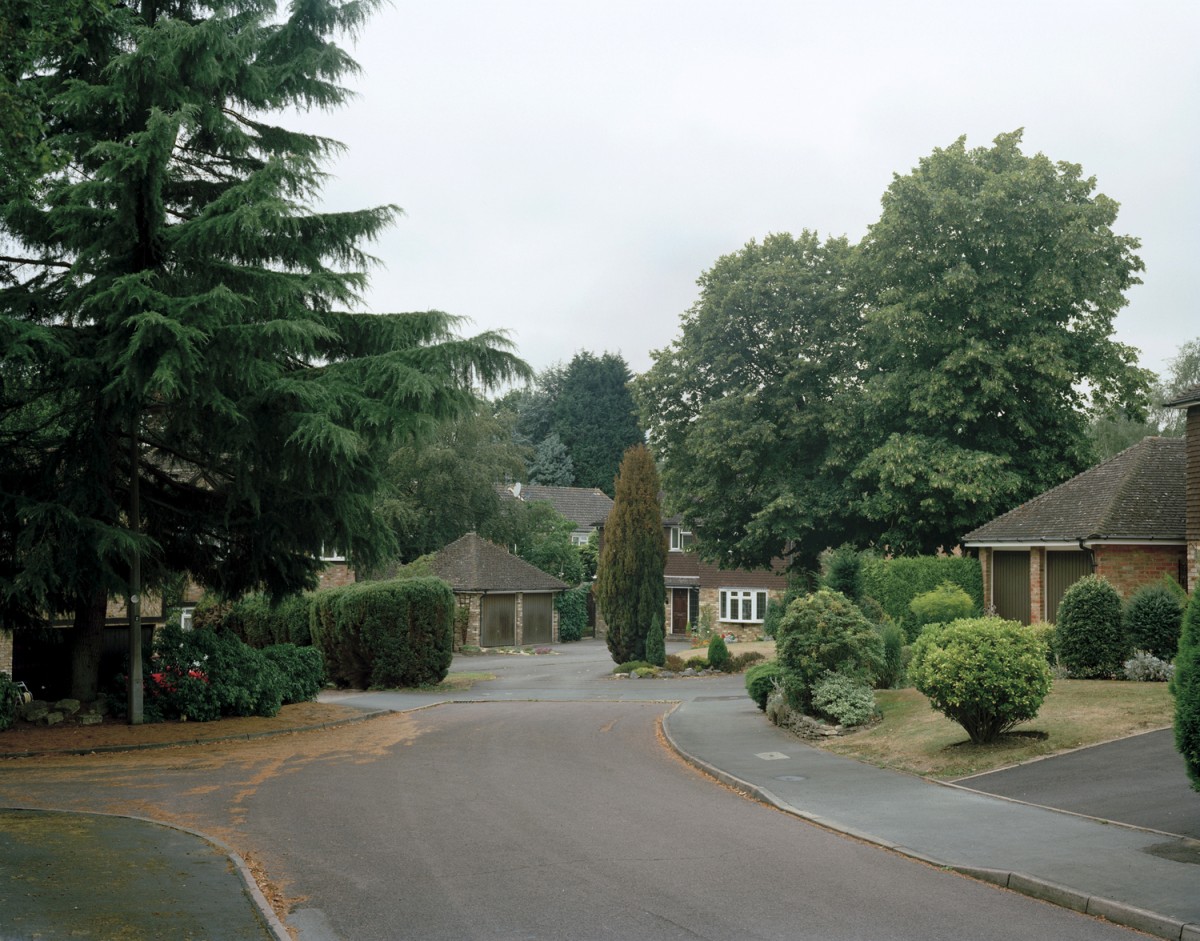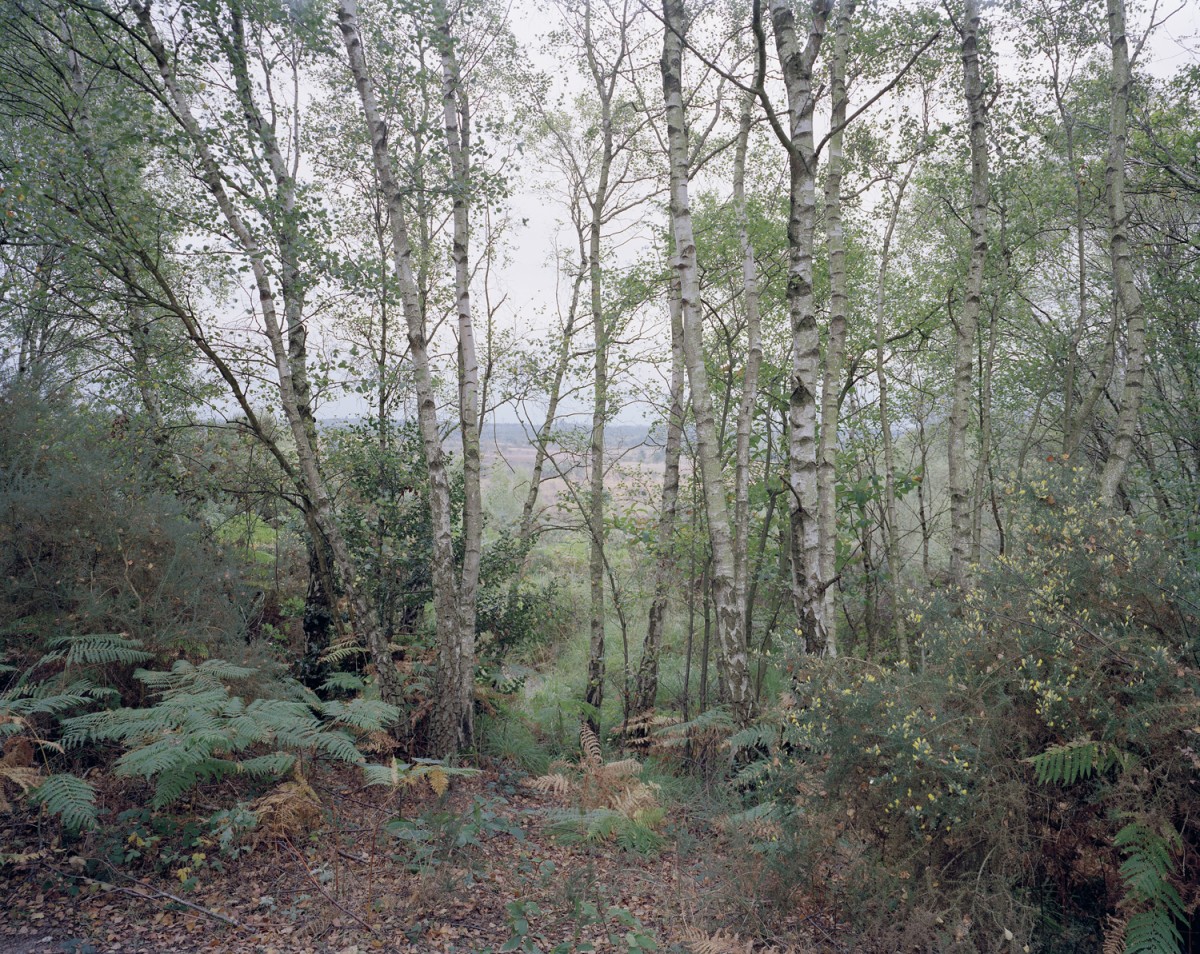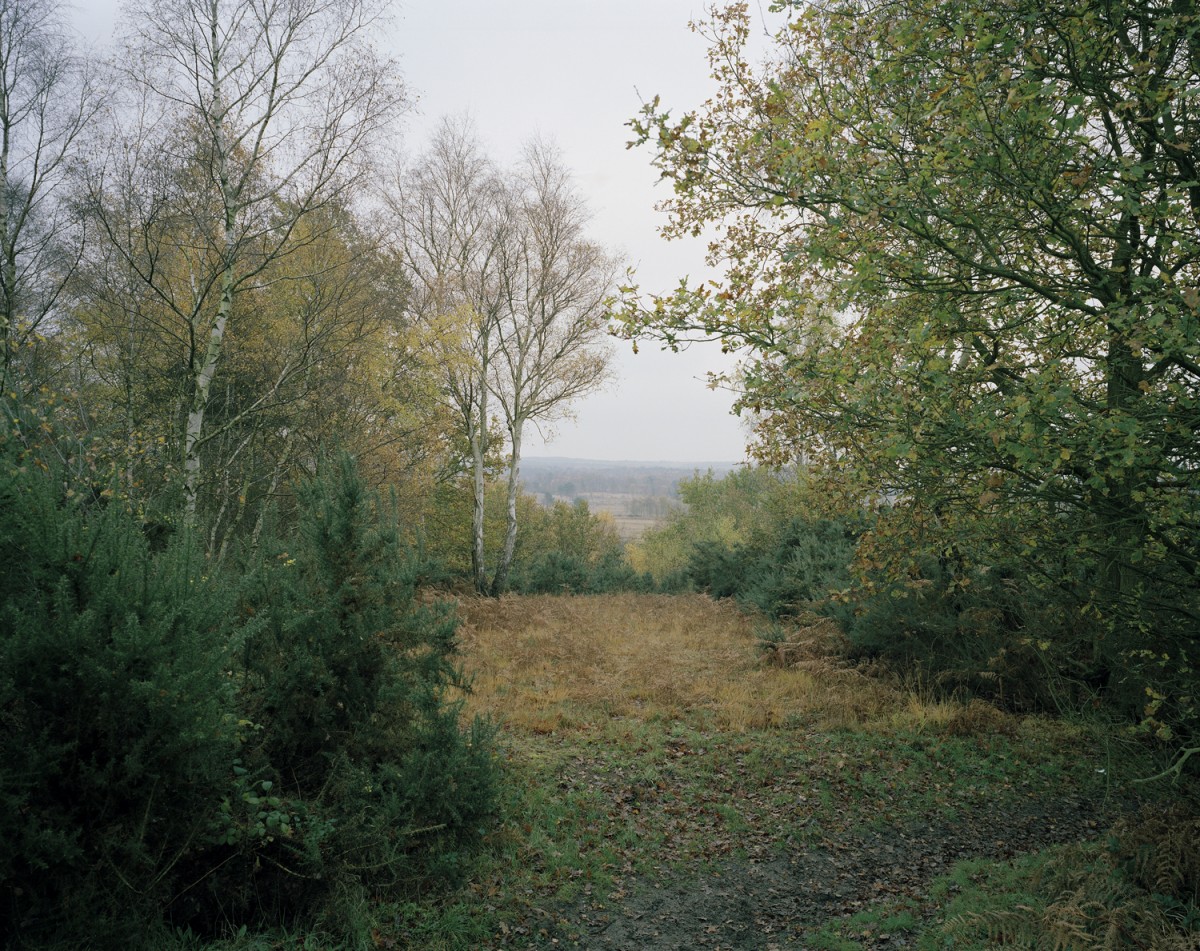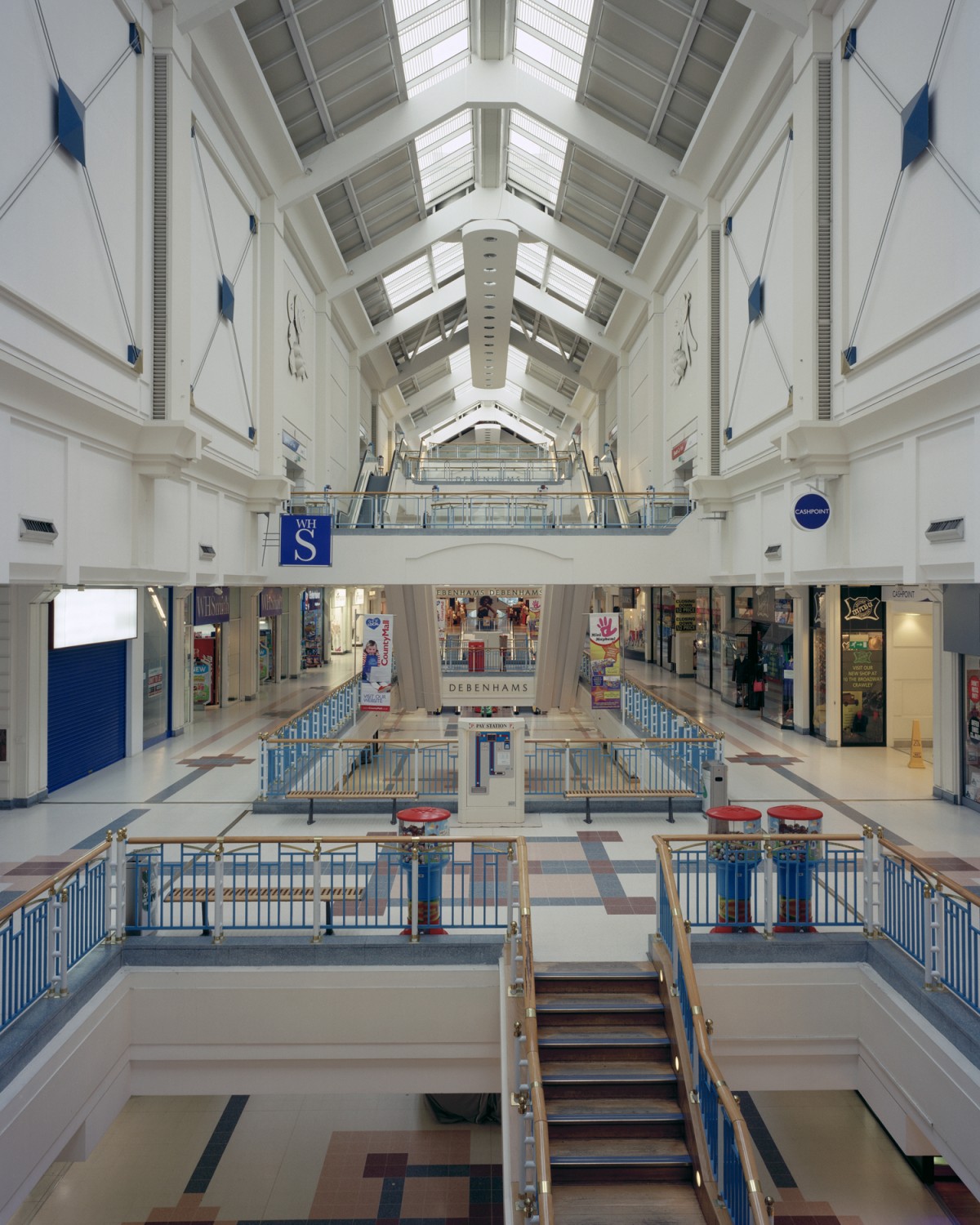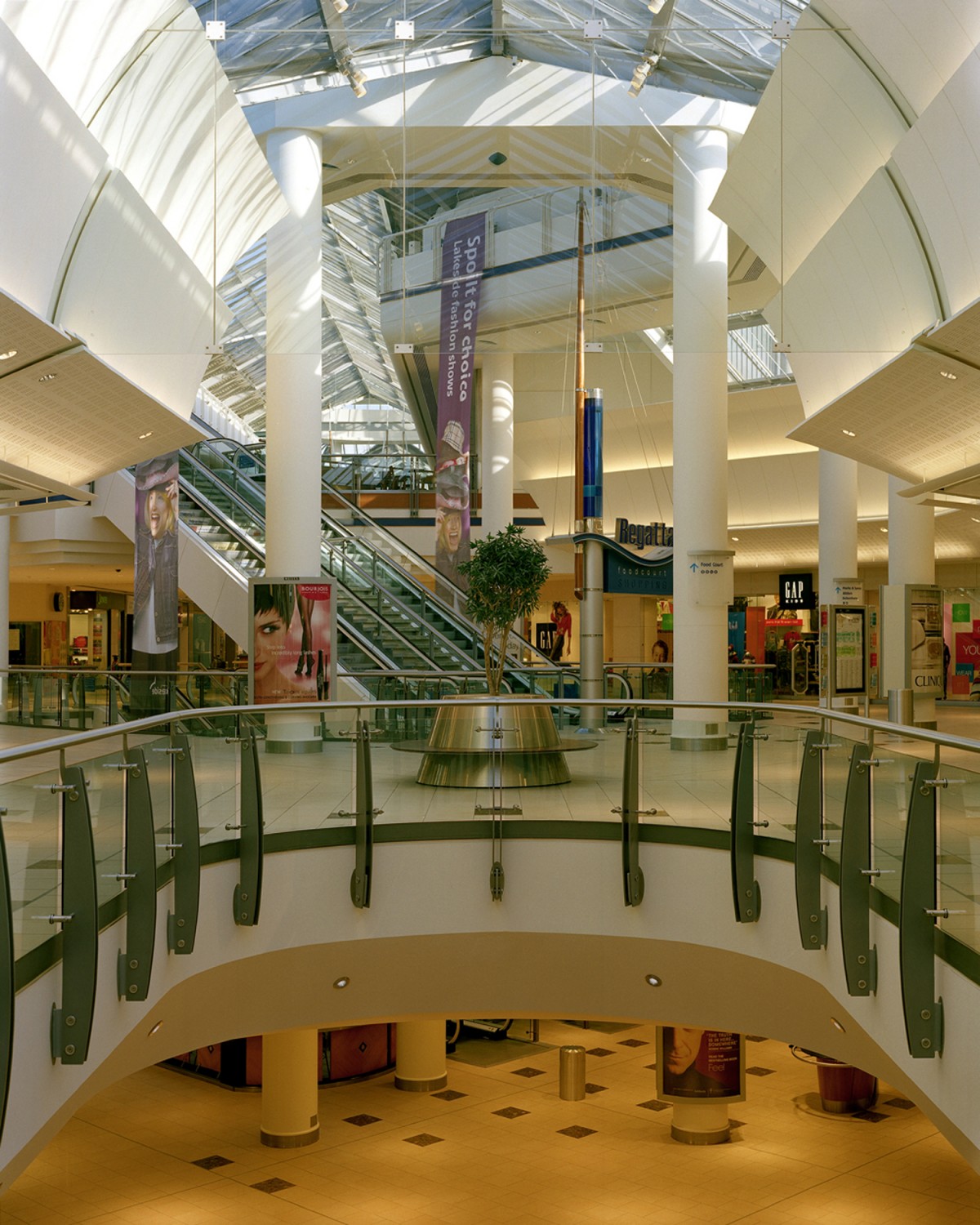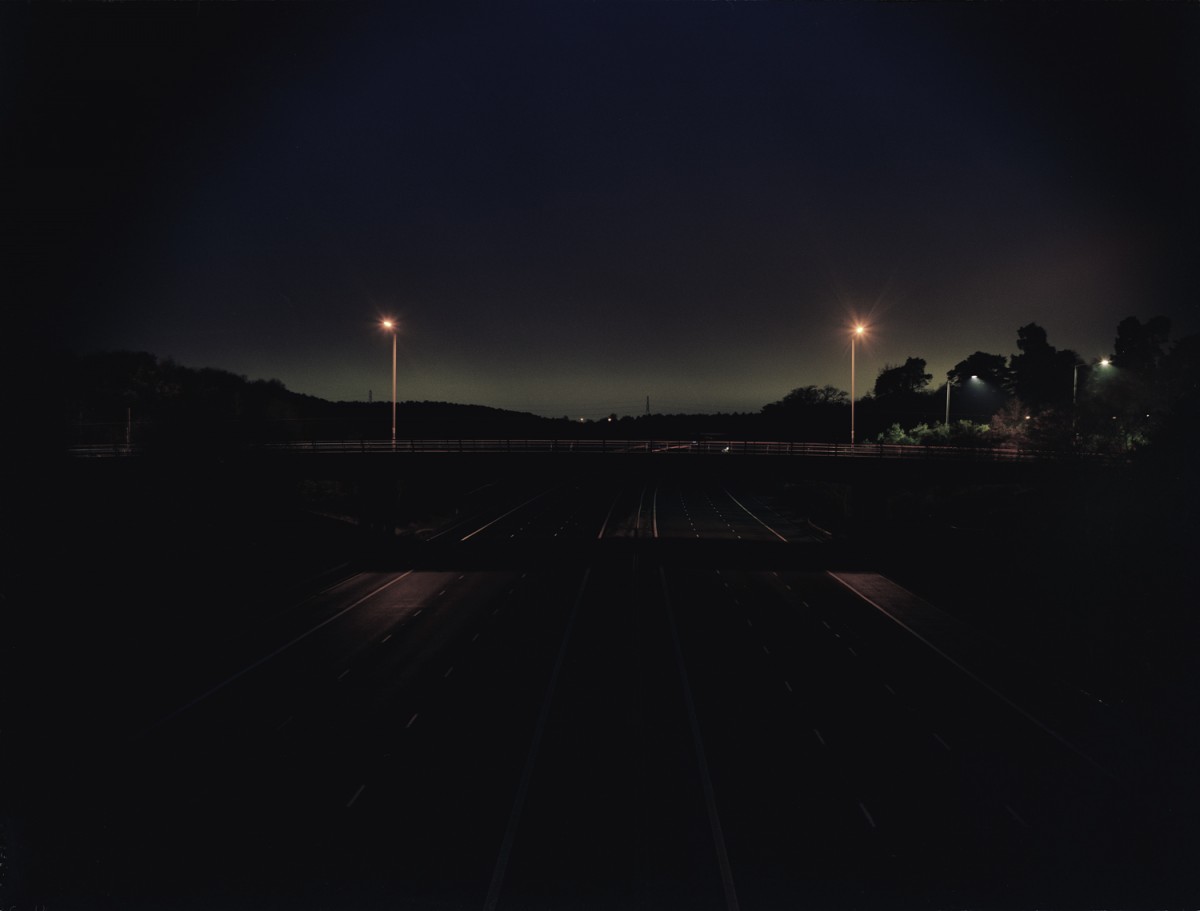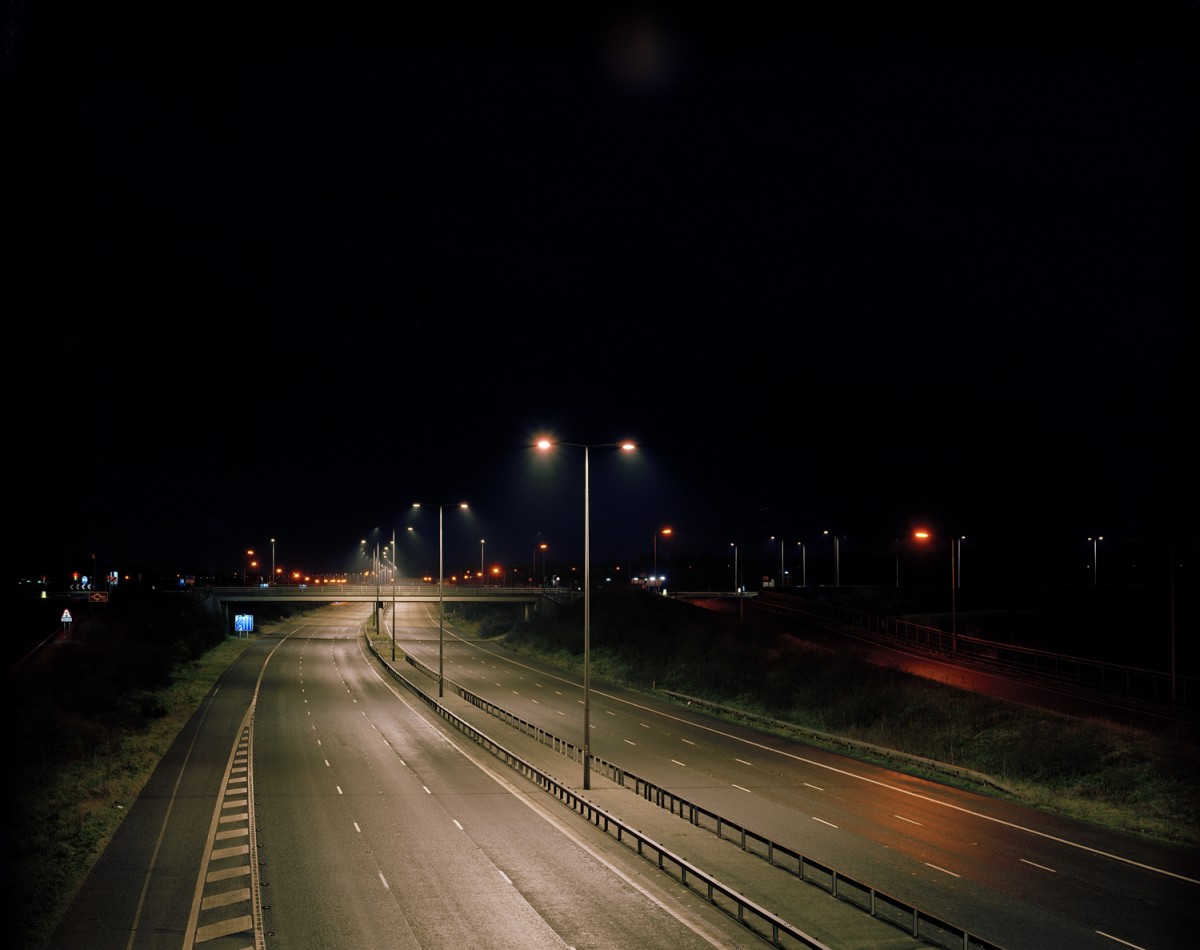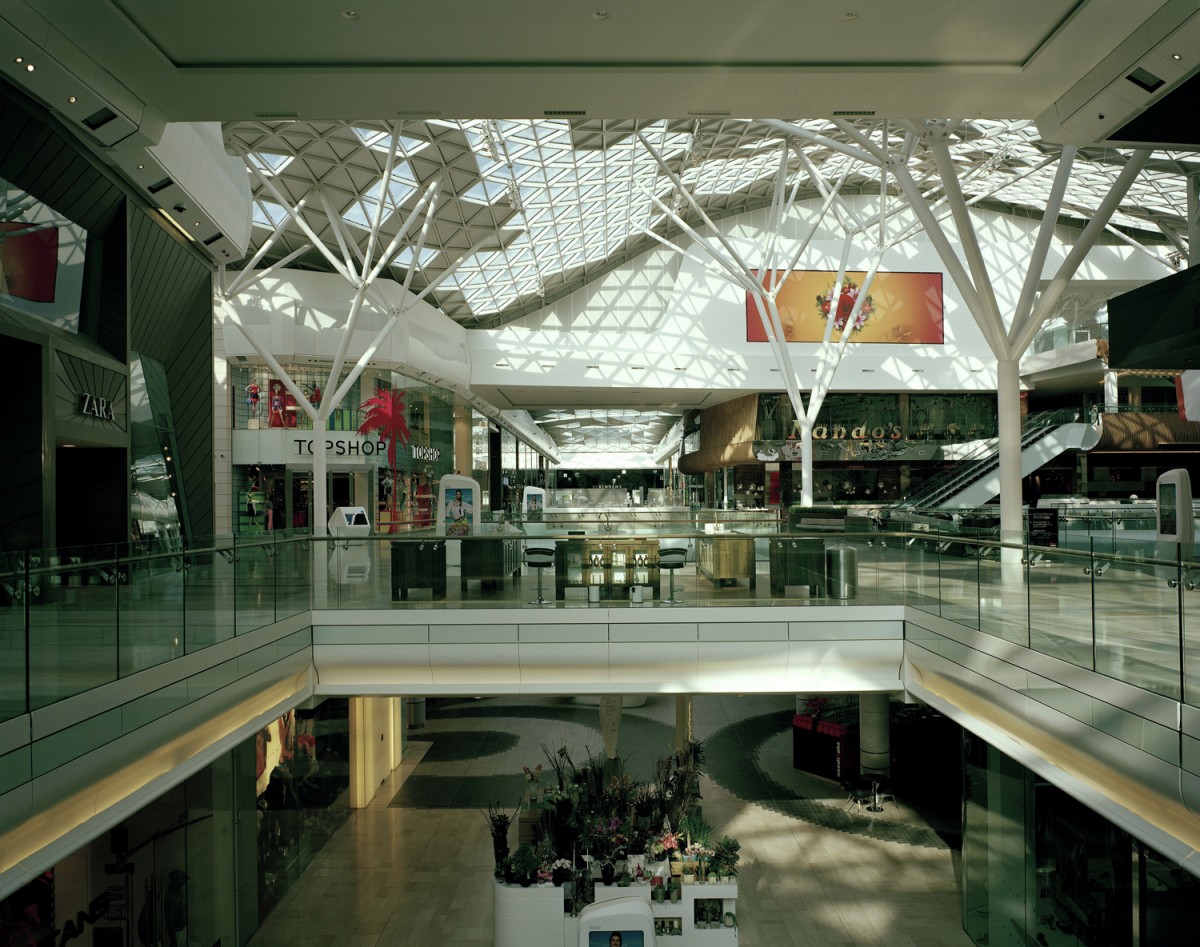We spoke to photographer and University of Brighton lecturer, Fergus Heron, about his explorations of commonplace landscapes and architecture.
PW: What is the relationship between the organic and the manmade in your landscapes?
FH: The relationship involves correspondences between visible aspects of humanly-made and non-humanly made places that occur both within and between specific works. For example, in the Charles Church Houses series, domestic dwellings, fragments of road infrastructure, cars, gardens, trees etc. are synthesized within pictures as signifying elements.

Other works, such as Shopping Centre Interiors contain and are structured by humanly-made elements almost exclusively. Conversely, works in the Common series organize non-humanly occurring elements of place. The correspondence between these latter works involves consistent picture structures that draw together different content and potential meanings.

However, these differences and meanings are not mutually exclusive; Shopping Centre Interiors often feature plants as decorative features as well as the sky as a visible light source and the effects of sunlight. The Common pictures can include litter, pylons, foot – prints, the effects of burning on the land etc.
PW: What purpose does timelessness and stasis fulfill in your work?
FH: I aim to make work with a sense of suspended time and intensified stillness that emphasizes its own photographic qualities. I am interested in asking questions about the medium and technology of photography through the work as much as I am interested in the visible world the work depicts.

This aim is both technological and conceptual. Technologically, a view camera is used that requires time to position and set up. The view camera is also a static apparatus that becomes part of the place it depicts during exposure; it slows the process of seeing. The view camera perhaps also involves an emphasis on photographic optics that is greater than photographic mechanics and anticipates an extended and intensified process of spectatorship in the finished work it is part of making. The camera’s format enables highly detailed prints to be produced that extend the duration of looking and related critical thinking. I also print all my own work that extends both the time of production and reflection upon it.

Conceptually, I am drawn to subjects that complicate simple distinctions between past, present and future; for example, the houses in Charles Church Houses appear strangely old and new at the same time, the Shopping Centre Interiors reference architecture from classical antiquity to the postmodern. The Common pictures involve a sense of immediate encounter and an emphasis on changing seasonal time, the latter of which is pre-modern.

There is usually no sense of an event occurring or having occurred in the work, acknowledging the future anterior of photography; it is what might occur that interests. A significant amount of thinking about the temporal dimension of photography is concerned with its relation to the past; but photographs can also involve a sense of the present and future.
PW: What result do you hope to achieve by removing human presence from your work?
FH: The absence of people in my work also emphasizes stillness. However, it mainly intensifies the focus upon place. Human absence from a picture can also complicate usual distinctions between the traditional and the modern; combinations of past and present are enhanced. If the pictures were populated, the potential appearances of people, especially regarding clothes and hairstyles, would fix the pictures socially and historically.

The absence of identifiable individual human figures is consistent across most of my work to date, but has different inflections from series to series. In those that involve suburban, common or woodland environments the spaces are often depopulated, so human absence is less remarkable in these kinds of works. In other specific series such as Motorways and Shopping Centre Interiors, human absence is actively produced by the photographic process both logistically and technically. The latter series is usually made with the camera very early in the morning before the spaces are open to the public. The former pictures are made up of multiple exposures when no activity is visible. In both these works the viewer is invited to imaginatively enter into an unusually solitary experience at odds with how the space might otherwise be encountered. All my work makes visible our act of seeing, if not our actual bodies in the world; this always involves a social dimension.

PW: Your photographs act as a point of convergence for many different notions. How do you enable viewers with this reading?
FH: My work as a whole explores questions of place involving the urban, rural, aesthetic, utilitarian, modern and traditional arranged as a spectrum of possible ideas rather than a set of basic binary tensions.

Viewing the work happens in different interrelated ways that involve exhibition, research presentation, printed publication and online. Where the photographs are reproduced in printed publication or online they become a kind of information related to but significantly different from exhibited printed works. In these forms, editorial context and accompanying texts or essays enable engagement with the work.

I consider exhibition as the principal medium of spectatorship for the work through which it can form a kind of knowledge with viewers in an encounter. Exhibitions including my work are usually themed group shows accompanied by talks where context, influences and processes are discussed and dialogue is opened up. Exhibitions also enable open-ended readings of pictures; I consider galleries, whether public institutions, private organisations or improvised spaces to be important social environments where we can freely, imaginatively and intellectually engage with pictures.
For other interviews from our Ideas Series, click here.
To see more of Fergus’s work, click here.
